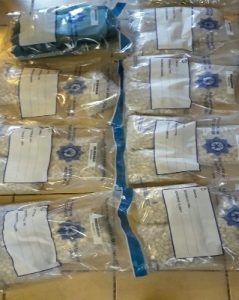AngloGold Ashanti said it more than trebled free cash flow generation in the first half of the year to $108m and lowered net debt by almost a third, as costs fell and it took advantage of a higher gold price.
AngloGold Ashanti has delivered on a range of self-help measures over the past two years to reduce debt using internally generated funds. In focusing on improving the quality of its production, the Company has sold some mines, closed others and made significant reductions to all areas of cost as it prioritises sustainable improvements to free cash flow and returns.
“We will continue to push hard to improve operational and cost performance, as well as our overall balance sheet flexibility, regardless of the gold price environment,” Chief Executive Officer Srinivasan Venkatakrishnan said. “Our focus remains to improve margins and grow cash flow and returns on a sustainable basis.”
Net debt fell by 32% to $2.1bn as at June 30 of this year from $3.1bn at the end of June last year, significantly lowering interest payments. On 1 August 2016, AngloGold Ashanti also completed the redemption of the remaining 8.5%, seven year bonds outstanding, at a total cost of the $503m. This extinguished the Company’s most expensive debt and fulfilled a key strategic objective by further reducing its future interest payments.
All-in sustaining costs (AISC) improved to an average of $911/oz in the six months through 30 June, compared with the $924/oz recorded in the first half of 2015. Production from continuing operations was 1.745Moz, versus 1.878Moz in the comparable period last year given the unforeseen challenges faced at the Kibali joint venture and planned reduction in output from the Tropicana, Geita and Obuasi mines.
The Company’s International Operations produced 1.259Moz at AISC of $873/oz, accounting for almost three in every four ounces mined. The performance benefited from weaker currencies versus the dollar in Argentina, Australia and Brazil. There were especially strong cost performances from Sunrise Dam and Cerro Vanguardia, which posted significant efficiency gains during the first half of 2016.
A number of brownfield expansion or mine-life extension projects are under way, including at Siguiri in Guinea, Sadiola in Mali, Tropicana in Australia and Geita, in Tanzania. Pre-feasibility studies of two key projects in Colombia are expected to be completed next year, potentially adding significant new reserves to the Company’s mineral inventory.
AngloGold Ashanti’s South African operations delivered 486,000oz of production at AISC of $958/oz, a 13% cost reduction from the first six months of last year. Mponeng, the largest of the local mines, continued its recovery with a 25% jump in output and a 28% reduction in AISC to $893/oz. Tragically, there were three work-related fatalities at the South African operations during the period under review, overshadowing safety improvements that have been made across the balance of the portfolio. The South African operations continue to face significant challenges due to safety-related stoppages, which have continued throughout the year.
Adjusted headline earnings were $159m, or 39 cents per share in the first half of 2016, compared with $61m, or 15 cents per share, in the first half of 2015. Net profit attributable to equity shareholders during the first half of 2016 was $52m compared with a net loss from continuing operations of $23m a year earlier.
Adjusted earnings before interest, tax, depreciation and amortisation (adjusted EBITDA) decreased by $12m, or 2% from $793m in the six month period ended 30 June 2015 to $781m in the six months ended 30 June 2016. The lower production year-on-year was largely offset by cost improvements over the same period. The ratio of net debt to adjusted EBITDA at the end of June 2016 was 1.44 times, compared with the 1.47 times recorded at the end March 2016, and 1.95 times at the end of June 2015, highlighting the success of AngloGold Ashanti’s continued efforts to deleverage and sustainably improve cash flow.









